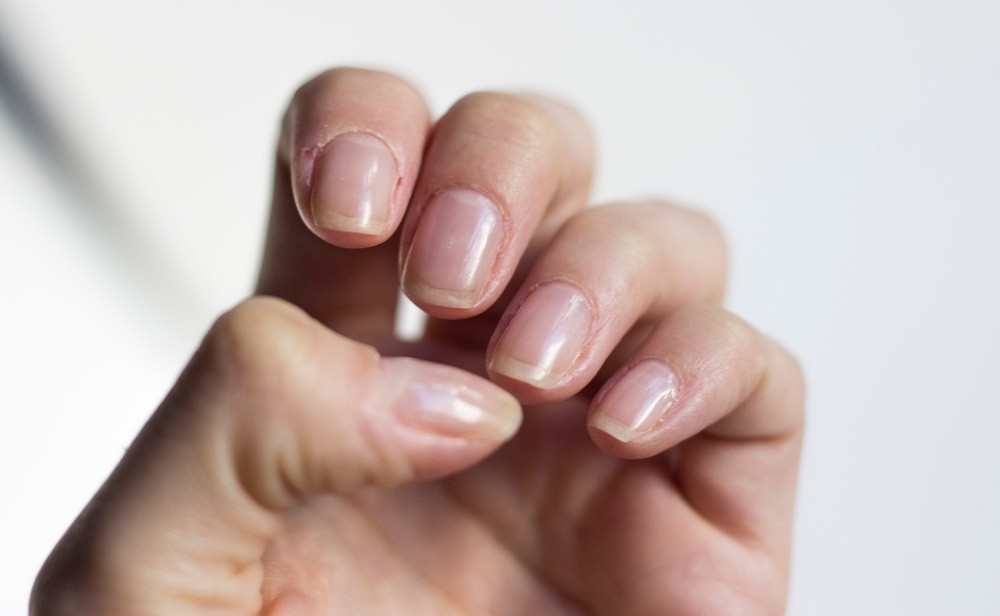Contents

If you’ve ever wondered about those tiny white spots on your nails, you’re not alone. Whether you have a strict routine or prefer a low-maintenance approach to nail care, those white spots can appear seemingly out of nowhere. By now, you likely recognize that your nails are an indicator of your health, so it can be easy to worry once you see random white spots emerge on your nails. Before you worry about your health or attempt to cut back on nail salon visits, we share everything we know about those peculiar white marks to help put you at ease. With Maby, you can take the initiative in everything. Please visit Maby blog to update the latest nail news.
What Are Those White Spots On Nails?
Our nails are usually pale and pink, with a lighter shade at the edge of the nail. However, white spots known as leukonychia can sometimes appear on the nail. Leukonychia is an abnormal keratinization of the underlying nail matrix that results in white discoloration of the nail. This condition can affect all or part of the nail and emerge on single or multiple nails.
What Causes White Spots On Your Nails?
There are numerous causes of leukonychia, ranging from illnesses to traumas. We’ll go over the four reasons for white nail patches.
1. Nail injury
The most frequent cause of white nail patches in people is injury. White bands, not tiny white flaws, can be brought on by trauma or nail injuries.
Such primary nail trauma as banging your finger against a car door is possible. Additionally, if the stress causes the nail to split from the nail bed, the entire nail may turn white.
However, even slight damage to your nail can result in white patches. For instance, biting one’s nails is typical behavior but officially causes nail trauma. It’s a significant contributing factor to white nail patches.
Trauma can also be chemical and is not always physical. Furthermore, white spots can be brought on by some nail paints and synthetic nails.
2. Medical conditions
Leukonychia is a complication of specific medical disorders. Usually, people don’t simply get white spots on their nails; they also get white bands.
Longitudinal leukonychia, or white spots that run up and down the nail, can be caused by diabetes, heart disease, liver illness, and heart failure. The top of the nail may turn white due to chronic renal illness.
Numerous nail abnormalities, including longitudinal and transverse leukonychia, can result after chemotherapy.
3. Vitamin deficiencies
The presence of leukonychia may indicate a vitamin deficiency. Deficits in calcium, selenium, and zinc can result in whitened nails. In addition to white spots, these deficits often result in white nail bands. However, you must have severe vitamin shortages to experience these nail alterations.
These deficits are uncommon, especially in those who consume a standard American diet. According to studies, individuals with white nail bands nearly always have normal vitamin levels.
4. Fungal infections
Nail infections frequently cause white patches on nails. Onychomycosis, often known as nail fungus, is when fungus spreads between the keratin layers of the nail.
A nail that has nail fungus will eventually become brown or yellow. But at first glance, it appears to be a white speck on the nail’s tip. Although it can affect fingernails, nail fungus is frequently found on toenails.
Keep a close check on your nails because early nail fungus diagnosis and treatment can prevent more severe signs like brittle or broken nails. If you have an athlete’s foot or ringworm infection and find new patches on your nail, consult your doctor about treatment options.
Also you can refer to: Why Should You Use A Glass Nail File?
5 Other Nail Care Tips
Now that we can finally put our minds at ease, it is still important to adopt healthy nail care habits. While relying on advice from a licensed nail technician is wise, you want more than just that information in your arsenal. If you’re going to keep your nails in great shape, follow these beauty tips below.
1. Don’t Bite Your Fingernails
Biting your nails can cause many health problems, from redness and swelling to nails filled with pus. The AAFP explains that paronychia can last up to six weeks and even cause the cuticle to separate from the nail plate.
2. Keep Your Nails Clean And Dry
With the number of bacteria we come across daily, washing your hands should be a top priority. Frequently washing and drying your hands throughout the day lowers the chance of bacteria spreading and causing infections.
3. Trim Your Toenails Regularly
Even if it should go without saying at this point, trimming your toenails is crucial. The American Academy of Dermatology advises cutting your toenails straight across to avoid issues like hangnails and ingrown ones.
4. Disinfect Your Nail Tools
Any beauty tools you use on your body should be disinfected. Dirty tools are a breeding ground for bacteria, so you’ll want to clean your nail tools, including nail clippers and scissors. Disposable tools should also be replaced for this very reason.
5. Do Not Touch Your Cuticles
Every time your cuticles are cut, it breaks the seal of protection at the base of the nail. This, of course, leaves you exposed to bacteria. If your cuticles look worse for wear, put your cuticles in the hands of a nail technician instead of trying to cut or clip your cuticles.
When should you visit a doctor if you notice white spots on your nails?
It is most likely the result of nail trauma if you have a few small white patches on your nails. However, you should visit a doctor if your nail has white lines or if your entire nail appears to be white. See a healthcare provider if you experience additional nail changes, such as pits or cracking, which is also a good idea.
Leukonchyia must develop. Quickly restoring your nail’s natural color takes a lot of work. If a fungus infection or other medical issue is the cause of your nail changes, treatment will stop further nail changes.
